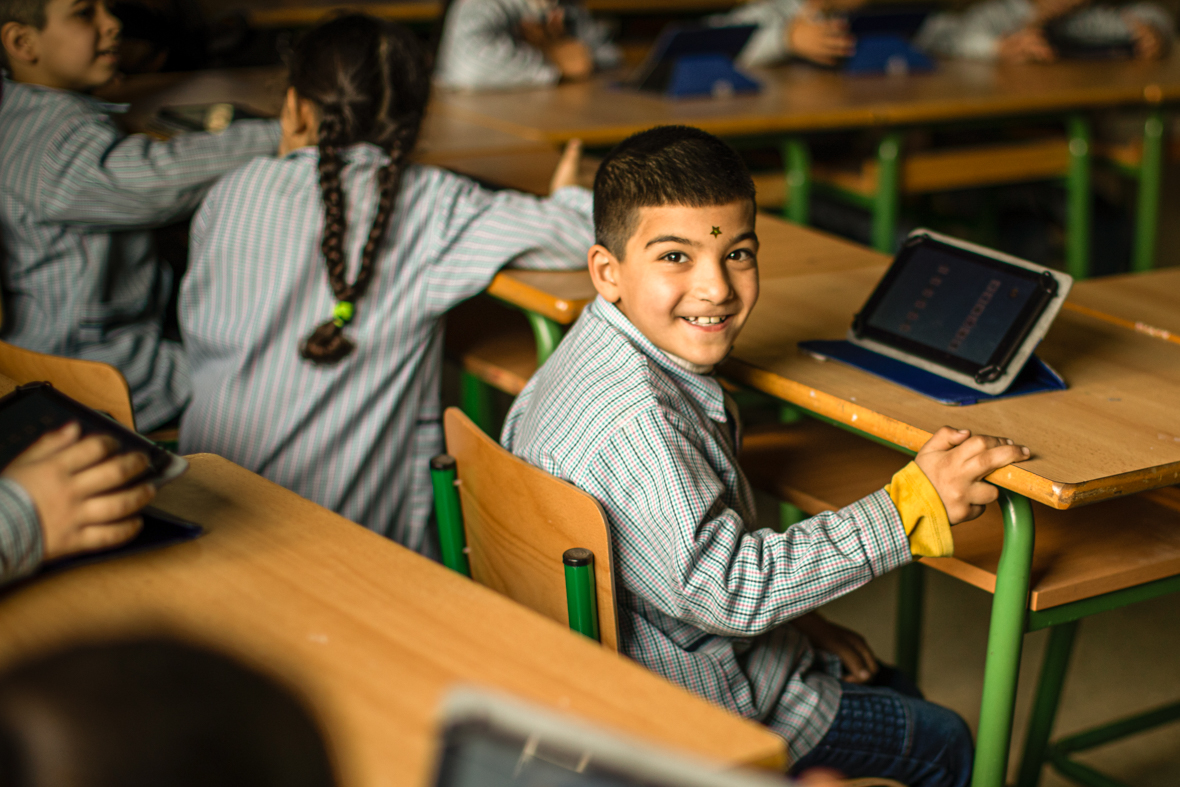
Education is an essential, lifesaving intervention
Education funding, Education in emergencies
Syrian refugee children at a school in Mtien in Lebanon Picture: Theirworld
In the conversations surrounding the new education in emergencies platform to provide additional funding and coordination for education in emergencies and protracted crises, we seem to be hitting a wall over and over again. That wall is money.
Those tied into the perspectives of key donors have a view of what is realistic to ask for and expect in terms of new money for education in humanitarian response. And over and over again, the “realistic” numbers are far too low and fall billions short of the actual need identified.
Naturally, arguments of scarcity and the limited sources of funding are implicit. However, we have seen from other global funds in the health sector (GAVI, the Global Fund to Fight AIDS, TB and Malaria), that the scarcity arguments just don’t hold up to scrutiny.
There is another explanation of why donors don’t seem to be able to come up with the funding that is actually needed to make a real impact for education in emergencies.
Quite simply, education is seen as a luxury, a “good thing” but not a priority, not a necessity. It is not seen for what it really is: education – especially in the context of emergencies and protracted crises – is an essential, lifesaving intervention.
Kenyan students at a school run by SHOFCO in Kibera, Nairobi, which will host a Theirworld Code Club
In conflict and crises, families, economies and traditional support structures that protect children break down. Children are left vulnerable and are all too easy to exploit under these circumstances.
They are sent to work to support their families, trafficked, at risk of sexual violence, recruited into fighting, married off for their protection (a decision that in fact has the opposite effect). The list goes on and on.
Children in emergency settings have often been traumatised and left in a state of deep uncertainty as everything familiar to them has been stripped away.
The results of these decisions, exploitations, harmful coping mechanisms and trauma will have devastating impacts for generations to come in the countries affected and the countries hosting those forced to flee the disaster – whether it is war, famine, epidemic or other disaster.
Affected communities are left traumatised and marginalised, falling into cycles of poverty, poor health, lack of rights and lack of prospects – deeply affecting and dampening the ability of these communities to rebuild in a positive and sustainable way. In the case of conflict, this also has the potential to set the stage for future violence and instability.
A Nepalese child who was injured in the 2015 earthquake
Education can change all this. Ensuring that children get back to school and learning during and post-disaster protects them. It keeps them out of exploitive working conditions, can prevent child marriage and provides them with a safe place to socialise, cope with their trauma and plan and hope for the future again.
Schools can provide immediate lifesaving information to children – which is easily disseminated back to their families as well – on how to stay safe from spreading disease, on their rights, on recognising and preventing human trafficking etc.
Education must be prioritised in humanitarian emergencies to ensure that children do not lose out on their right education – an education that can provide them with essential skills and knowledge to build a future full of opportunities, not one condemned to poverty and marginalisation.
Education is lifesaving. It is generation-saving. It is essential to any successful, comprehensive humanitarian response and it must be funded.
This week leaders from all over the world will be gathering for the annual Spring Meetings of the IMF and World Bank in Washington, DC. The political champions of the education in emergencies platform will also meet and, in a little over a month, they will gather again at the World Humanitarian Summit in Istanbul to formally launch the platform.
However, this platform will only represent a real, meaningful change in the way education is provided and prioritised in emergencies if donors are willing to make ambitious commitments to fund it.
More news

